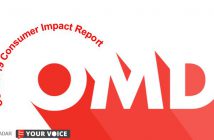
I have found it interesting to chart the growth of both sentiment and buzz as measurement tools. In fact, I find myself looking the terms up, just to be certain I know what people are referring to (the simple definition of the noun sentiment is “an attitude toward something; regard; opinion” whilst buzz is defined as “a low vibrating, humming sound, as of bees, machinery, or people talking).
Whether this is something old wrapped up in new clothing, or something genuinely new and not seen before, it has certainly had an impact on us research folk. Are they important things to measure? Well yes, because brands want people to be talking about them, and saying nice things about them!
For me though, two important questions are raised: What should we measure and how should we measure it in order to maximise our learning and answer the right questions.
What we measure
First and foremost, sentiment and buzz measurement happens primarily in the online space. Whether its newspapers online, blogs, tweets or Facebook posts, this is where ‘buzz’ is happening and ‘sentiment’ is being expressed.
What jars here is that whilst digital is big, offline is still bigger. A lot bigger in fact. According to TalkTrack some 93% of word of mouth happens away from the internet. This is important, especially when we consider the inherent demographic skew of the online places where online buzz occurs and sentiments are expressed.

The net result is that we risk missing out on conversation and content related to brands that occurs in a different space and from a different audience. To coin Tom Webster of Edison Research, we need to know what we don’t know: we need to be aware that we are not capturing everything. There is a real danger that brands could make ill informed decisions on the back of unrepresentative data.
As an exercise, keep a keen ear as you’re walking to the tube, sat on the bus or having a beer after work. The richness and variety of conversation and opinion about brands is truly enlightening, and in my opinion certainly as valuable as its online equivalents.
How we measure
The second area of importance, linked to the first, is how we measure. When a Ryanair complaint receives 500,000 likes on Facebook or 116,000 tweets per minute are sent as the Spice Girls cavort around the Olympic Park during the closing ceremony there is a danger that we can be blinded by the big numbers and consider anything less than this as inferior.
Just because there is a lot of something doesn’t mean that we need to count it all, or that is necessarily better. When I started out in research one of the very first things you were taught about was sample. Specifically sizes, robustness and representativeness of sample. If you take a random cross section of say 1,000 comments about your brand this is as good as 65,000 comments about your brand. But we may have the capability to measure these 1,000 comments in a better, more insightful way.
Which leads me onto the quality of analysis. An algorithm built to measure ‘sentiment’ can only do so much. No machine has the capability to fully appreciate the nuances of the language we use – irony, humour, sarcasm or text speak. Here’s just one example where the algorithm has picked up a word (bribe) and attributed it as a negative brand sentiment, when in fact it is quite the opposite.

Scale this up to all of the mentions in social media/on the internet and suddenly this looks like a potential problem.
So should we measure buzz and sentiment?
Yes, absolutely! But what and how we measure and how we apply these findings is critical. We need an approach that carefully crafts the volume of data available to us with relevant methodologies that provide genuine understanding to get the most from the tools available to us.
We have recently worked with a number of different tools which go beyond measuring volumes of buzz and reporting black and white sentiments by dissecting the language consumers use, both on and offline, to provide a really granular and rich level of understanding.
The findings are of real and tangible interest and, in my opinion, a genuine step forward in the way we can use the fascinating amount of data available to us out there. So let’s embrace buzz and sentiment but not lose sight of the questions we want to answer.
Post by Chris Worrell, Insight Director



